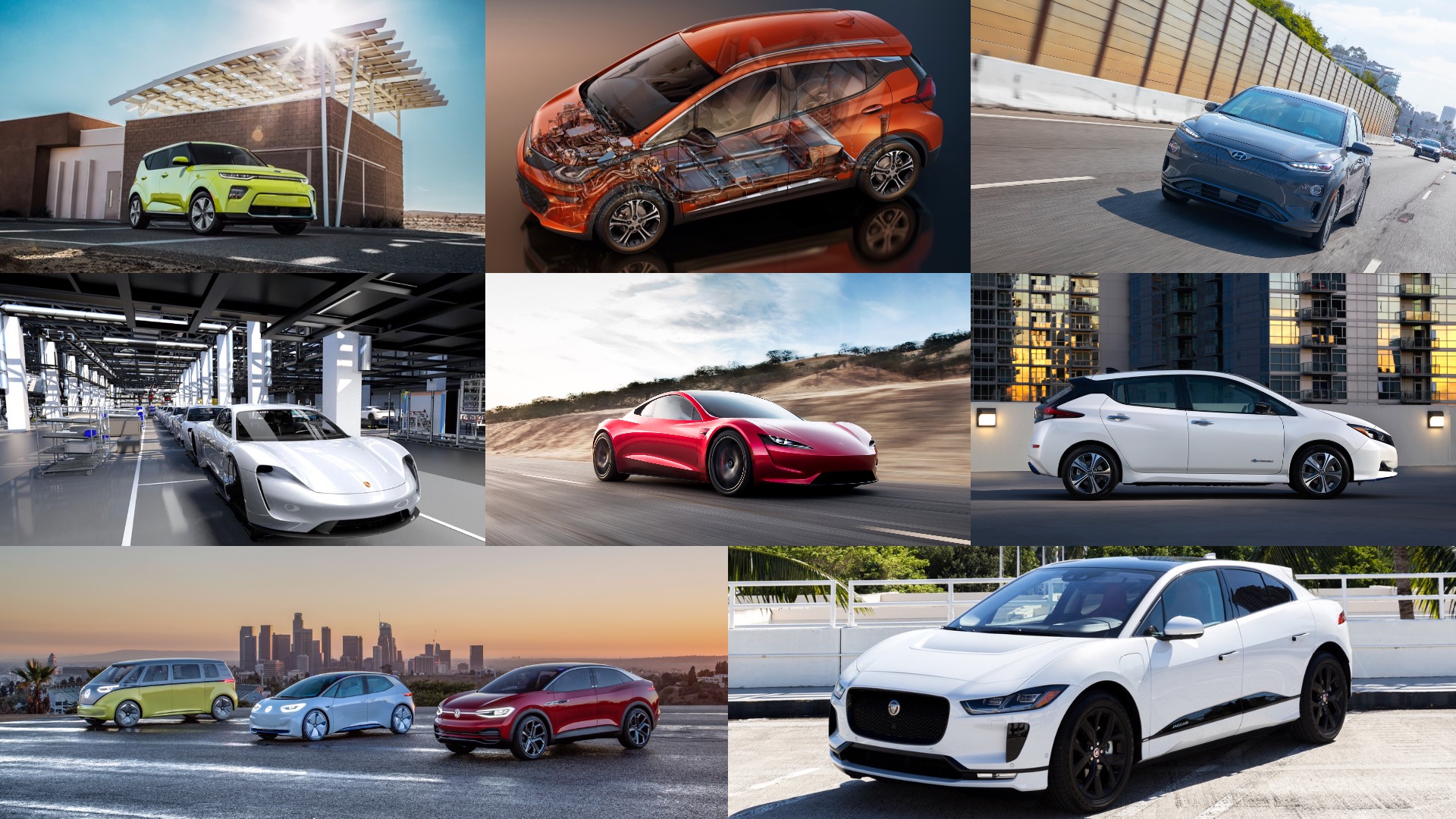

Keeping up with the world of electric cars these days is hard. Every time you open your phone, some automaker has invented a new buzzword, meant to make it sound forward-thinking, responsible, cutting-edge. It’s all about impressing investors and customers, but sometimes it gets to be a little much—a recent survey by AAA found that too much electric car jargon turns off buyers. People just want to understand what they’re reading, and neither the automotive industry nor its media following has realized that not everyone’s a tech writer with an encyclopedic knowledge of these terms.
That’s where this list comes in. We’ve selected 12 of the most important phrases, terms, and acronyms you should understand to follow what’s going on with electrified vehicles and how we talk about them. Our goal is to make you EV-literate, and to feel ready to start an electric car blog of your own—hopefully one more reputable than some of auto media’s newcomers.
The Basics
Yes, we’re starting here. We don’t want to lose you.
Hybrid
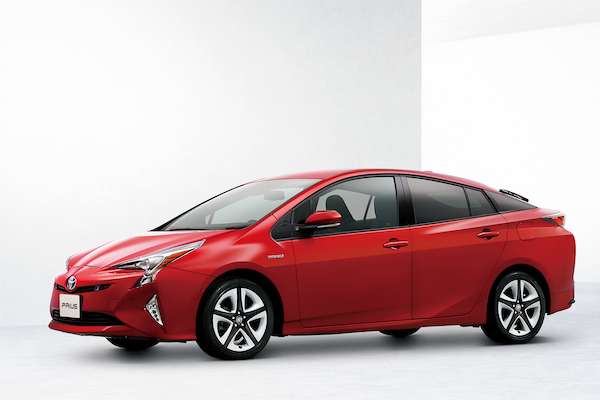
A hybrid propels itself with a combination of a traditional combustion engine and electric power. It does this by wedging an electric motor somewhere into the drivetrain, sometimes directly attached to the combustion engine, sometimes standalone on an axle to power a separate set of drive wheels. This motor pulls power from a battery that charges via regenerative braking, which is what happens when the electric motor acts as a resistance generator and converts car’s the kinetic energy back into electricity (think of a hand-crank flashlight or emergency radio). That kinetic energy would normally be dissipated as heat via traditional friction braking.
But not all hybrids are similar underneath. Most fall into a category called “mild hybrid,” meaning they have an electric motor that helps the combustion engine move the car, but they can’t drive under electric power alone. “Plug-in hybrids,” often abbreviated “PHEV,” can move under full electric power for a limited amount of time thanks bigger batteries and sometimes more powerful motors than mild hybrids. Plug-ins can rarely travel more than 50 miles in EV mode—but if you’ve got a shorter commute and keep it plugged in when you park, you can drive on battery power alone most of the time. And of course, when you need longer legs for road trips, you’ve got a good ol’ fashioned internal combustion as a backup.
Electrified
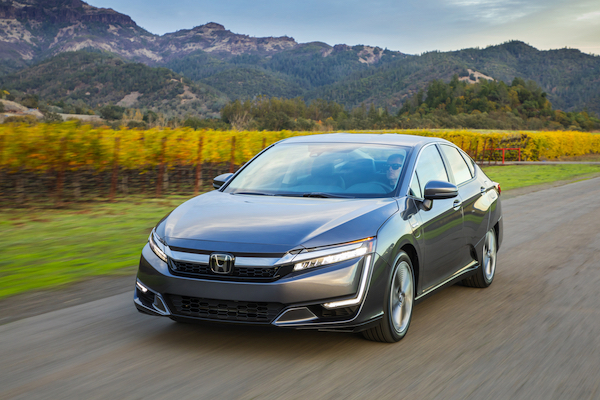
“Electrified” is another term for vehicles that use some form of electric propulsion. That doesn’t mean it’s just another word for hybrid, though: It’s a larger umbrella term that’s been adopted for a wider variety of cars, trucks, and buses that have electric motors. It covers hybrids, yes, but also battery-electric vehicles with no combustion engine (often abbreviated as “EV” or “BEV”) and hydrogen fuel-cell vehicles (FCEVs) like the Honda Clarity, which generates electricity via the chemical reaction between hydrogen and oxygen.
BEVs and FCEVs also fall into the probably-unnecessary “ZEV” category, an occasionally used shorthand for “zero-emissions vehicles,” which, duh, produce no harmful emissions on the go. Whether generating the juice they require produces carbon emissions may be a different story, but that depends on the setup of the electrical grid in the region where they operate.
EV
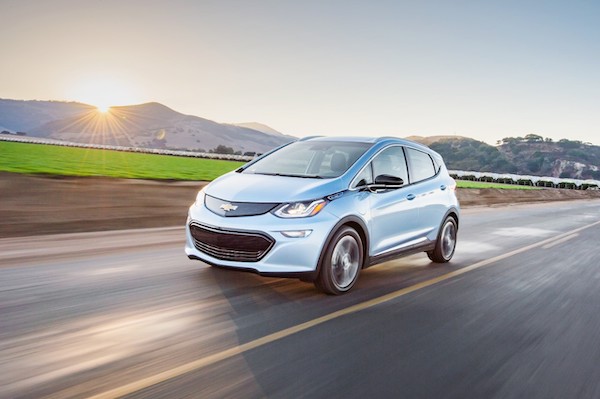
“EV” is a common shorthand for “electric vehicle.” It has become the most common term used to describe battery-electric vehicles, even though it doesn’t doesn’t refer exclusively to them. When see “EV” thrown around, odds are people are talking about BEVs.
The Specs
You know what a gallon of gas is, and what MPG means, but what’s a kilowatt-hour? How about that MPGe thing? You’re about to learn.
Kilowatt-Hour (kWh)
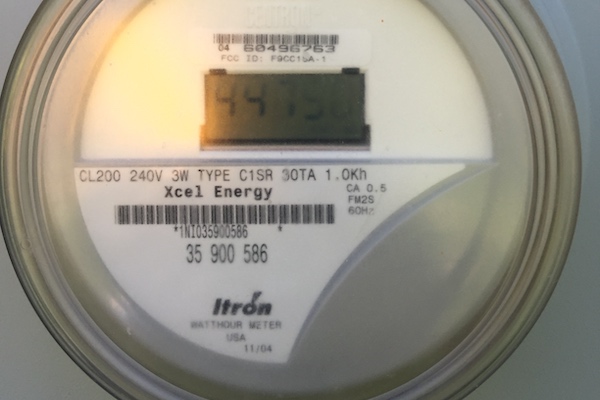
Any time you read about electric vehicle batteries, you’ll hear them measured in “kilowatt-hours” (typically abbreviated “kWh”). As your home electric bill will show you, a kilowatt-hour is a measurement of energy, but that doesn’t really tell you how you use that information in a car. Think of a battery in the same way you think of your gas tank, and a kilowatt-hour as you do a gallon of gas. Put one gallon of gas in your tank, and you can expect to drive a certain distance; one kilowatt-hour (the energy into your battery, and you can drive X number of miles. It’s the electric car equivalent.
Kilowatt (kW)
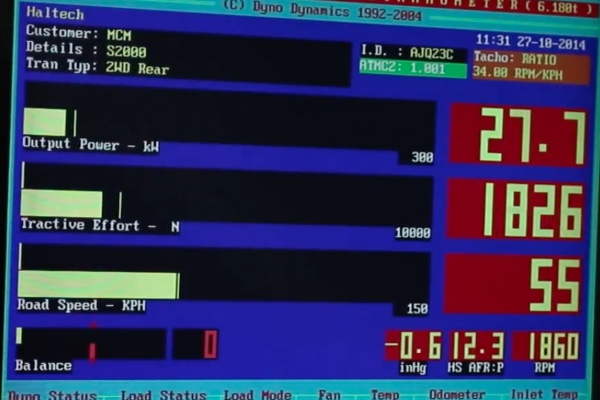
A kilowatt itself is also a measure of energy, equivalent to a thousand watts, and in batteries it can be thought of in much the same way as mechanical horsepower in combustion engines. You can convert between these two units of measurement by using a simple 1.34 multiplier to convert kW to hp; 100 kW equals about 134 horsepower. Both units are already used interchangeably in parts of the world, such as Australia, where you may hear owners bragging about the power of their non-EVs in kilowatts rather than horsepower.
MPGe
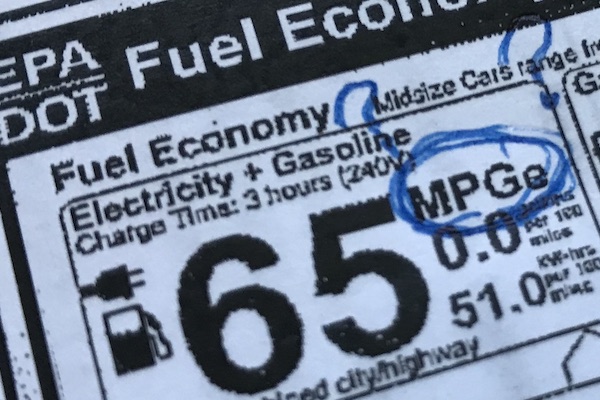
Here’s a weird one you’ve probably read but might not understand. MPGe stands for “miles per gallon gasoline equivalent” and is supposed to represent how many miles an electric vehicle is estimated to be capable of traveling on the amount of energy contained in a gallon of gas, which is 33.7 kWh according to the EPA.
That probably doesn’t make much sense to you—and you aren’t alone. MPGe hasn’t caught on as a popular metric, and not just because it’s too abstract for most people to understand. The problem is that doesn’t say anything useful about an electric car’s capabilities. Yes, a higher MPGe rating means a car is more efficient, which is better. But battery capacities are all over the place, so more MPGe doesn’t yet correlate with more range. An inefficient vehicle with a big battery may be more usable than one that’s efficient, but has a smaller battery.
Where MPGe is supposed to be most helpful is plug-in hybrids, which have to be rated for both pure electric range and MPG efficiency when the gas engine kicks in. Theoretically MPGe is able to encompass both of these measures in a single number, but practically speaking the efficiency of a PHEV will always depend on how far you drive it, since it’s basically an EV until you hit its electric range limit and a hybrid thereafter.
Because PHEVs are essentially two drivetrains in one, measuring their efficiency will always be more confusing than a simple range or MPG rating. This probably explains why PHEVs aren’t selling particularly well, as well as why MPGe has never really taken off.
The Context
Information about an electric car’s range is never complete without one of the following acronyms in close proximity: NEDC, WLTP, or EPA. These are the world’s three most predominantly used test protocols, and they say a lot about whether an electric or electrified car can actually achieve what its manufacturer claims in range. But different protocols give different results, so it’s important for you to know when an automaker is trying to play you for a fool by promoting the results of a test that puts its products in the most favorable light possible.
NEDC

NEDC, or “New European Driving Cycle,” is a test method last updated in 1997, meaning it predates the Toyota Prius. Even in its day, the NEDC protocol was accused of creating MPG figures you could never replicate in the real world. For electric vehicles, any range results from an NEDC-cycle test will be inflated and likely impossible to achieve out on the road without severe hypermiling. Thankfully, most of Europe and Asia abandoned this obsolete test method in favor of WLTP-protocol tests in 2017, though a few automakers still rate their EVs’ ranges with the flattering NEDC ruler. Looking at you, Mercedes-Benz.
WLTP
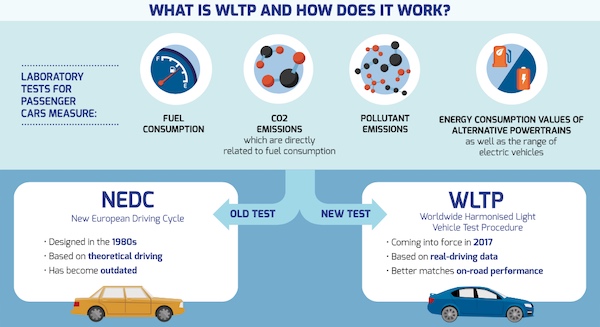
The Worldwide Harmonized Light Vehicle Test Procedure, shortened to WLTP, is the test method in use today across most of Europe and Southeast Asia. Though it replaced the flawed and long-outdated NEDC system, WLTP still has its detractors, as its range ratings for EVs are still on the generous side. In theory, you can drive your EV as far as the WLTP says you can, but it’ll still be something of an inconvenience.
EPA

Yes, that EPA. Our very own Environmental Protection Agency is in charge of determining domestic fuel economy ratings, and that means estimating EV ranges also falls under its purview. Compared to the other two major testing protocols, the EPA is the most conservative with its results, estimating shorter ranges for EVs than you get from either WLTP or NEDC testing.
This is in part due to highway driving, where EVs are less efficient, making up a larger proportion of North Americans’ driving, and thus a bigger chunk of the EPA test than in WLTP or NEDC tests. If you live on this continent, the EPA’s numbers are the ones to recognize. Demand EPA test results. If you’re elsewhere, abide by WLTP. But regardless of where you live, always look for test protocol behind the promised range, because how you reach a result is just as important as the result itself.
The Final Piece of the Puzzle
There’s one major topic left to address: charging. Drivers worldwide are used to the idea that they can drive their gas-burner into a fuel station anywhere, fill up in a few minutes, and be back on the road with little time lost. Electric car owners don’t have that luxury yet, but dozens of companies are working to give them the option: Fast-charging stations are popping up by the thousands across the world.
That said, who’s to say your EV will actually be compatible with any of these new chargers? What if they have newfangled plugs that don’t fit your car, and adapters aren’t available? Fortunately, the century-old auto industry was wise enough to foresee compatibility problems, and not everyone went their own way with different connector designs. You’re not up a creek on low battery these days. Standardization is starting to take shape. Let’s look at the most common types of connectors in use in North America and their primary users.
SAE J1772
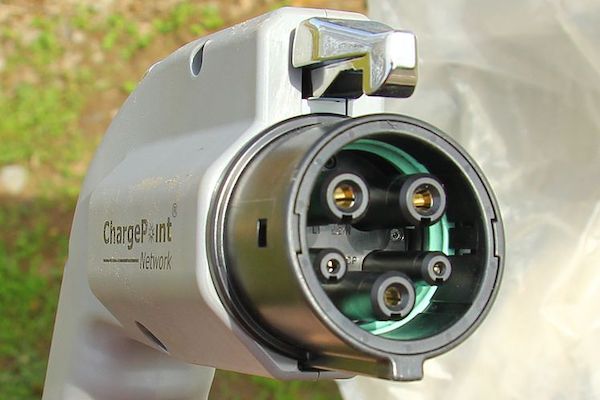
Sometimes known as just “J-plug,” the J1772 connector is mainly used for home charging at up to 240 volts AC (sometimes called “Level 2” charging). Though there are a couple variants in service globally, North American J-plugs are uniformly Type 1. J1772 isn’t compatible with DC fast-charging, but it’s more or less the standard connector on most automakers’ PHEVs, and even appears on some full EVs like the Nissan Leaf.
CCS
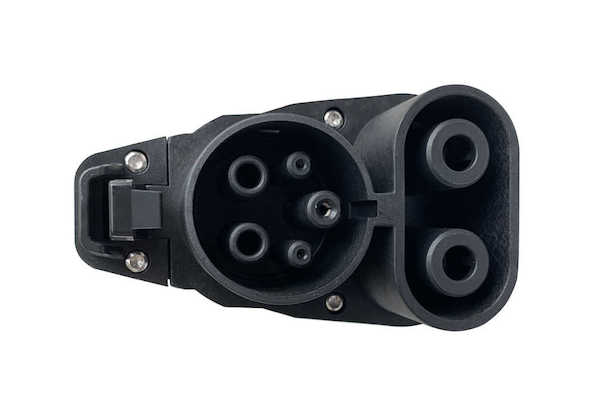
Look familiar? That’s because Combined Charging System is a derivative of the J1772 plug, one featuring an extra pair of plugs beneath the J-plug’s five pins. These enable CCS-equipped electric vehicles to accept DC fast-charging at significantly higher wattages than is possible with AC-only J1772 plugs, meaning you’ll be on the move again much sooner—DC fast-charging is typically rated in miles per minute, rather than miles per hour.
CCS is popular among North American and European automakers, and one variant was even accepted by Tesla as the default connector for the Model 3 in Europe. It has one main competitor in the western world for fast-charging, the tough-to-pronounce…
CHAdeMO
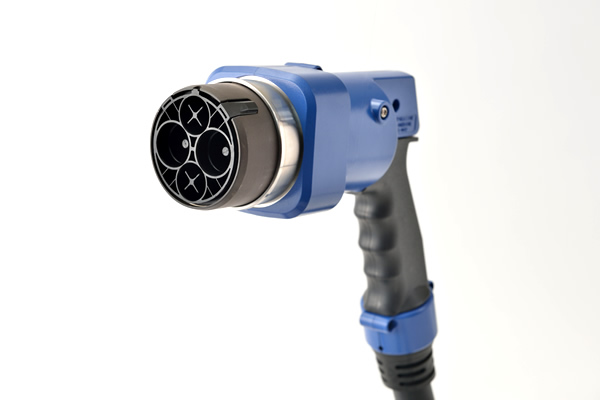
CHAdeMO is a cutesy name derived from the Japanese phrase, ocha demo ikagadesu ka, which translates as “how about tea?”, referring to the promise that charging up your EV will eventually take as little time as drinking a cup of tea.
Mostly found on Japanese or Korean cars, CHAdeMO is an exclusively DC-oriented connector, and unlike CCS it’s used only for fast-charging. Infrastructure for CHAdeMO in North America isn’t as good as it is for CCS, but you’re still not short on charging options, and can find them along most of the US’s arterial Interstate highways. More CHAdeMO fast-charging stations come online all the time, so in most regions you’re not handicapping yourself by picking a CHAdeMO-equipped car instead one with CCS.
Tesla

Being the first company to construct a widespread fast-charging network, and with no connectors meeting Tesla’s requirements at the time, the American startup developed a connector of its own, based on the IEC 62196 Type 2 “Mennekes” design. As an in-house design, it’s proprietary to Tesla and the only one officially compatible with the extensive Supercharger Network.
Tesla, however, seems less than committed to its self-designed plug style. It sells adapters that permit plugging its cars into J1772 and CHAdeMO connectors, and already manufactures versions of its products with CCS plugs for sale abroad. Tesla won’t talk about whether it plans to change wholesale to another plug design, but we wouldn’t be surprised if it too adopted CHAdeMO or CCS as its own standard in the future.